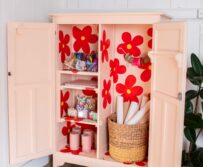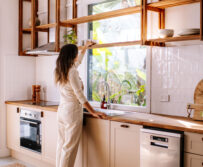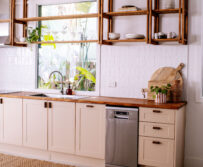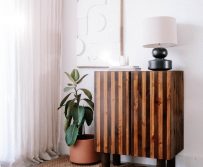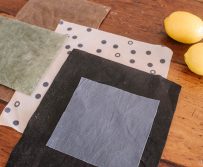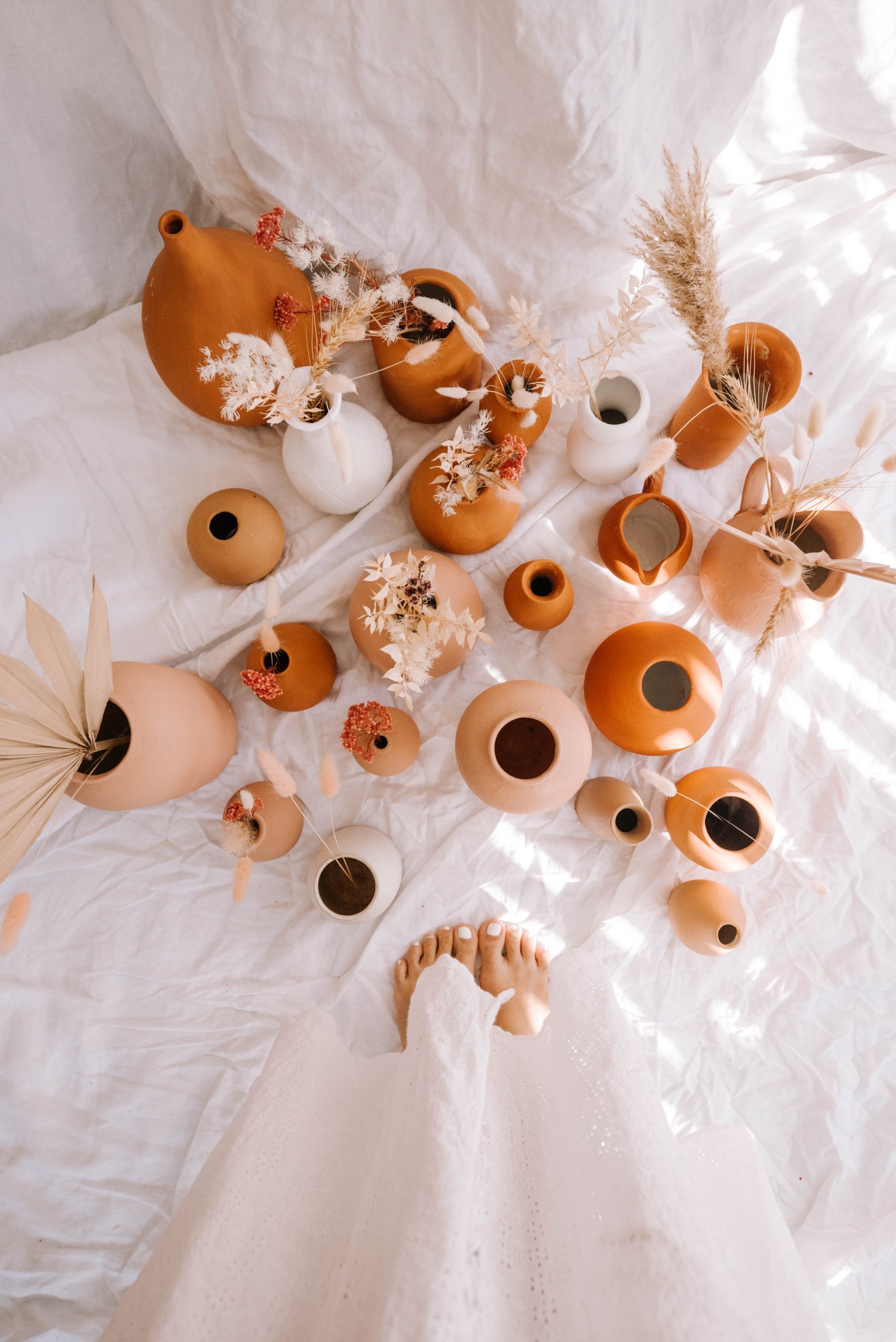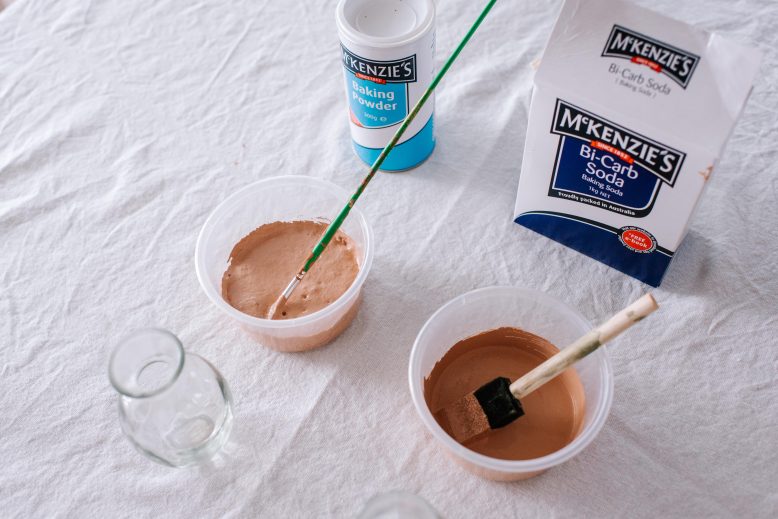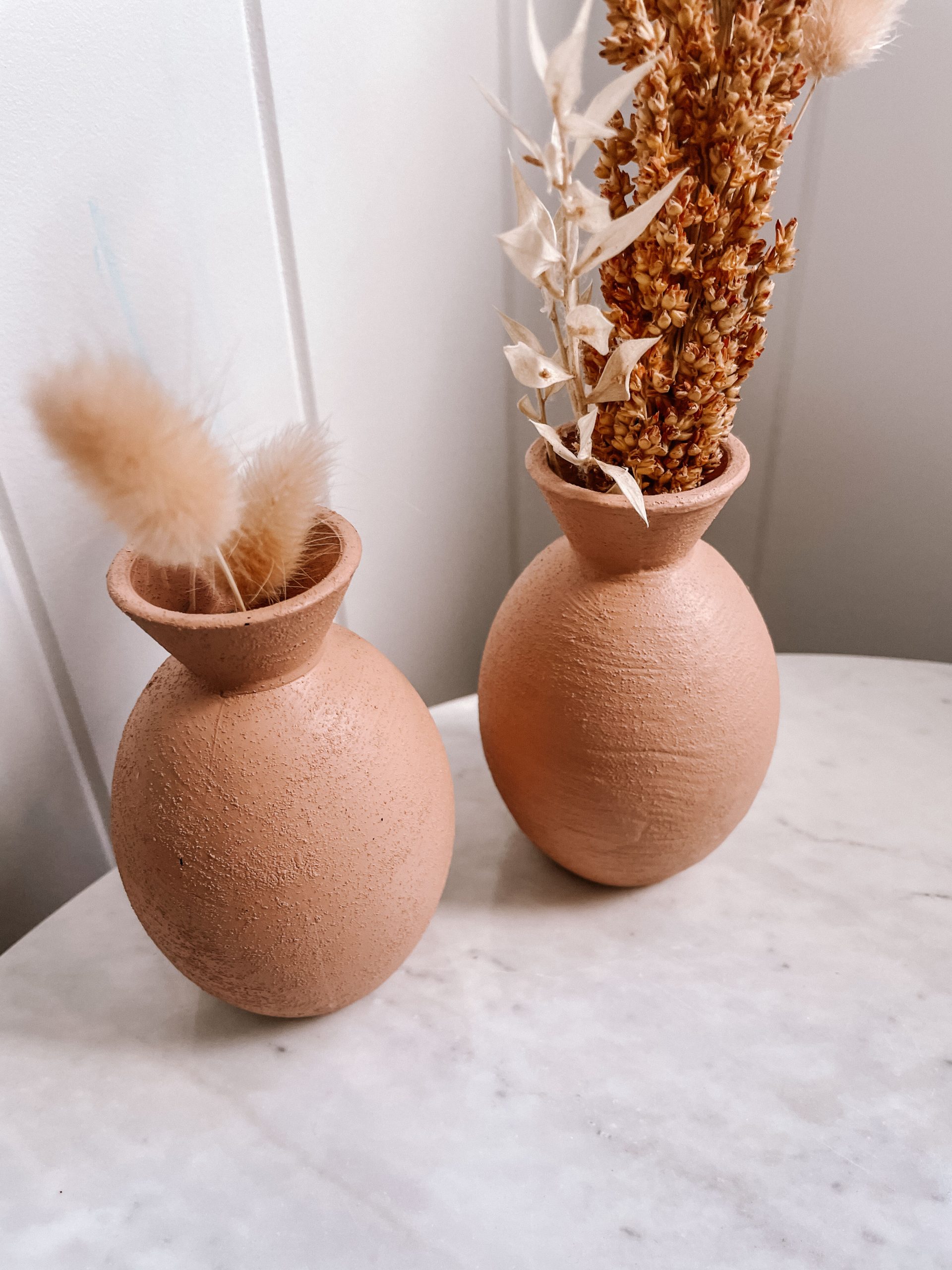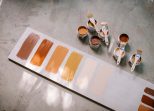One of the most common questions I get asked about #trashtoterracotta is whether it’s best to use baking powder or baking soda, and if there is any noticeable difference in the outcome.
When I first started #trashtoterracotta I used baking powder, and since then I have seen a lot of people recreating the project with baking soda. In fact, I often get people contacting me to tell me I’m doing it wrong by using baking powder. Haha! So I thought it would be a good idea to do a test to see which works best. What I found is that there is no wrong or right way – however, the finishes are quite different so you can choose your paint based on your desired end look!
Check out the original recipe here!
Testing Baking Soda vs Baking Powder
The first thing is to understand the difference between these two additives. Baking Powder and Baking Soda (aka bicarb soda) are very similar and designed for adding to baked goods to create a rise. The difference between them is that Baking Powder has an acid in it that means all you need is to add water to create a reaction. On the other hand, Baking Soda doesn’t have acid in it so there isn’t a bubbly reaction when added to water unless you add lemon or another acid. For this project, it’s the water in the paint that creates the change in texture.
Baking Powder
Immediately after mixing 1 cup of acrylic water-based paint with 1 teaspoon of baking powder, you can see the paint fluff up and is full of texture. The paint is very dense and has little bubbles all the way through it. It applies in a thick coat and easily covers all cracks, imperfections and the underlying colour or pattern on the vase.
Baking Soda
When I mixed 1 cup of acrylic water-based paint with 1 teaspoon of baking soda, the paint remained at the same thickness, however there was a noticeable grain to the texture – almost like fine sand. There wasn’t a noticeable bubbly reaction, which meant when it was being applied to the vases it didn’t cover the patterns, colours or imperfections as well.
Left is the paint mixed with baking powder, the right is the paint mixed with baking soda.
My findings
This was such a great experiment to do, and even though the two final vases do look quite similar, there was a noticeable difference in the thickness of the paint and how it went on. This results in the baking powder version having a thicker and more realistic ceramic appearance. The baking powder version didn’t create a reaction, and because of this it was similar to adding salt or sand to the paint – it added texture but not thickness.
If you prefer a thicker coat that looks more like ceramic or if you need to properly cover imperfections or an underlying pattern, then baking powder is the one for you! If you prefer a minimalist look that shows up details or lines in your vase, but still have a grainy look, the baking soda is the one for you.
On the left in the above imagery you can see the Baking Soda vase, and on the right you can see the Baking Powder.
